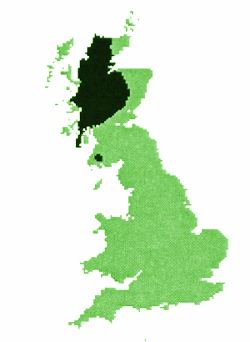


 |
Pine martens used to be found all over Britain. there are records of them throughout england in the 19th century. By 1850, they were absent or scarce in large areas of southern England, but still present in heavily wooded parts of Sussex, Devon and Cornwall. By 1915, the pine martenwas extinct in almost all of England, although very small numbers remained in Cumbria and north Wales. even in Scotland, they survived only in the far northwest. They used to be trapped for their beautiful fur. However, Medieval law decreed that only royalty might wear this. Clearance of forests probably caused substantial declines in pine marten numbers. The popularity of the shooting estate in the 19th century that led to the loss of pine martens from nearly all of Britain. Studies have shown that it was the number of gamekeepers (and therefore trapping intensity), but not woodland abundance that accounted for the timing of the extinctions in different counties. Trapping and persecution also resulted in the loss of polecats, wildcats and several species of birds of prey. Since the first world war, the number of gamekeepers in Britain has declined enormously. This can be correlated with an increase in its area of distribution in Scotland. Despite hopes in the 1980s, recent research shows that there is no scientifically credible evidence that pine martens have naturally re-colonised parts of England or Wales. |